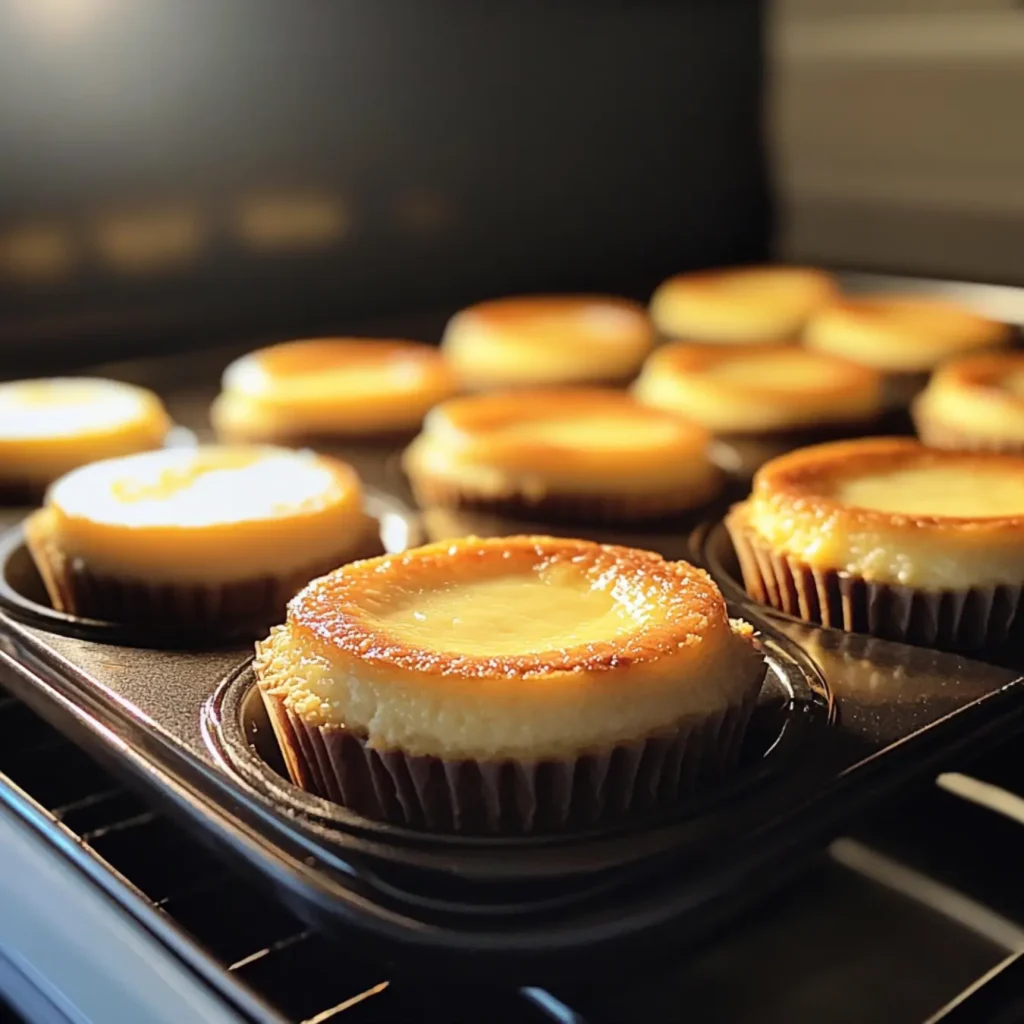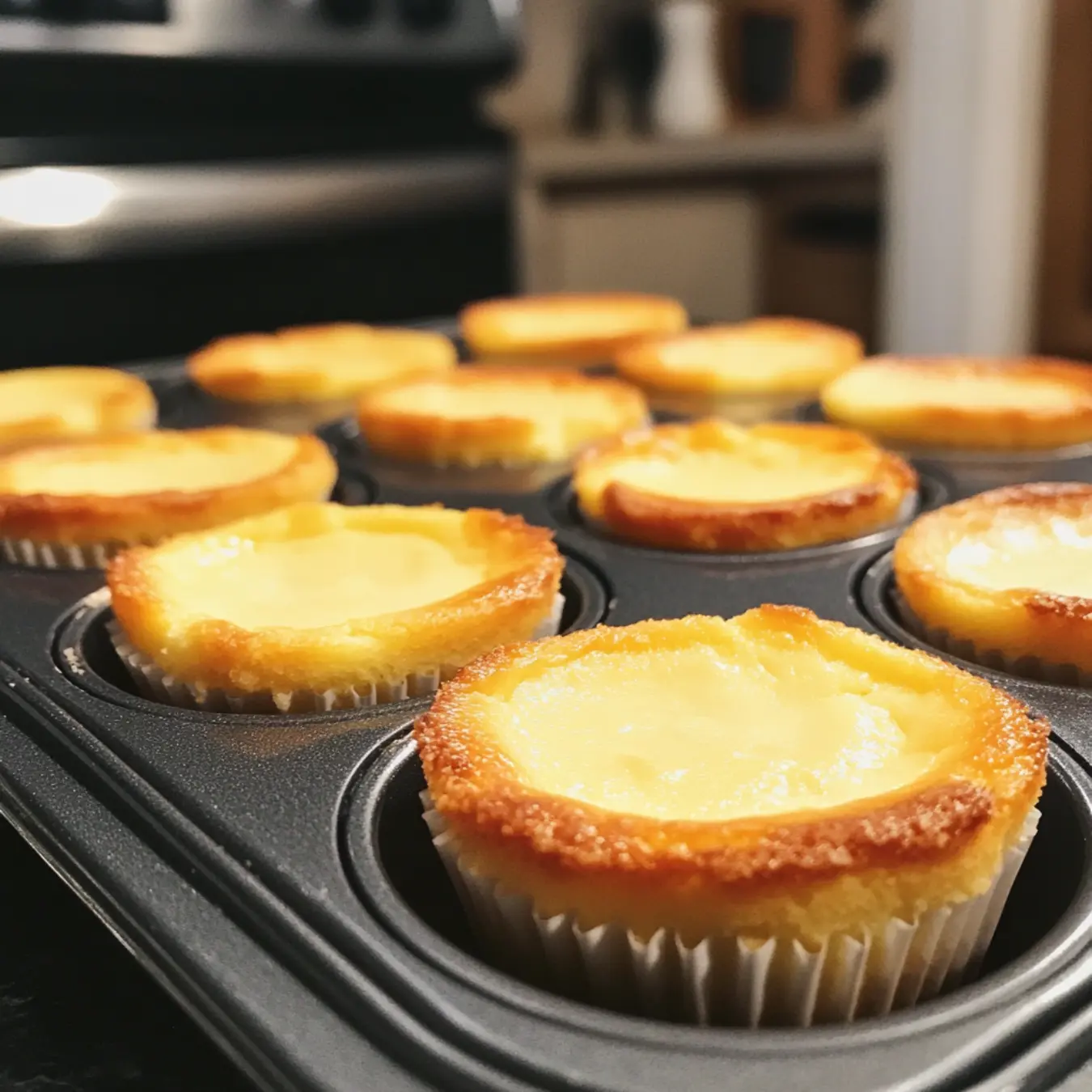A great treat, mini cheesecakes are creamy, delicious, and exactly sized. Knowing exactly when they finish baking can be challenging, though. Mini versions of cheesecakes cook faster than ordinary ones, which reduces room for mistakes. Out too early, they will be undercooked and overly soft. Leave them too long, and you risk cracking dryness or a rubbery feel.
How do I know when mini cheesecakes are done? The secret is knowledge of the jiggle test, visual signals, and cooling strategies. This article will cover doneness indicators, appropriate baking periods, temperature settings, and typical faults to prevent.
Let’s get into the specifics, first addressing why mini cheesecakes are special and how best to bake them perfectly!
Table of Contents
Basic Mini Cheesecake Baking Techniques
How Different Mini Cheesecakes Are from Typical Cheesecakes?
- Though they seem like their full-sized cousin, little cheesecakes have a few important variations.
- Faster Baking Time: Usually baking in 15 to 20 minutes, they are smaller than a complete cheesecake and so need less time.
- While conventional cheesecakes call for a water bath to prevent cracks, mini cheesecakes bake uniformly in muffin tins; hence, no water bath is needed.
- Mini cheesecakes are pre-portioned, perfect for parties, get-togethers, or dinner prep sweets.
Why Do Mini Cheesecakes Need Correct Baking Techniques?
- Mini cheesecakes that are improperly baked may come out broken, overly soft, or too dry. The following explains why you need to have the timing precisely perfect:
- Undercooked Mini Cheesecakes: Should the middle be very soggy or moist, they will not set correctly and may fall apart upon refrigeration.
- Leaving overbaked Mini Cheesecakes in the oven too long might cause them to lose their distinctive creamy texture and turn either dry, thick, or rubbery.
- Correct Cooling Matters: The leftover heat from turning off the oven keeps the cheesecakes solid. One must know when to remove them!
Indices of Mini Cheesecake Done Baking
How should I know when little cheesecakes are done? The good news is that you may easily find obvious indicators to guarantee the optimal baking of your cheesecakes. These techniques from visual clues to texture tests will enable you to remove your cheesecakes at the proper moment before they overbake or undercook.
How Much Should It Move? The Jiggle Test
- The jiggle test is one of the quickest approaches to see whether your tiny cheesecakes are done. This is how it operates:
- It’s not too forceful, just a little motion gently shake the muffin pan.
- They’re done if the centers jiggle somewhat, but the edges are solid.
- The cheesecake needs additional time if it wobbles like liquid all around.
- A little jiggle is perfect since little cheesecakes will keep setting as they cool. They may come out overdone and dry if you bake them until solid.
Examining the Edges: Look for What?
Apart from the center, the margins also reveal doneness. This is what to look at:
Edge Appearance
What It Signifies:
- Golden and strong light. Perfectly done; take out of the oven
- Pale and watery in appearance, needs more time.
- Dark brown and drawing away. Overbaked, textural quality could be dry.
Just perfect is a golden cheesecake around the edges yet still soft in the middle. Bake for another two to three minutes if the edges seem too pale; then, recheck.
Reliability of the Toothpick or Knife Test
Though it’s not perfect for cheesecakes, many bakers use the toothpick test for cakes and muffins. Why is that? Cheesecakes are custard-based. Hence, a clean toothpick does not necessarily indicate that it is done. Instead, if necessary, employ a thin knife:
- Put it midway in a cheesecake’s edge from the center.
- They’re done if it comes out mostly clean with a few wet crumbs.
- Bake for a few more minutes if it comes out wet and creamy.
Texture and Colors: Visual Indices of Doneness
Apart from the jiggle test, color and texture reveal a lot about a work:
Visual Cue
What It Means:
- Slightly golden on top – Completed
- Surface that is dry and cracked over one surface, either wet or shining – Needs more baking.
- Mini cheesecakes should appear solid on top but not dry or broken. Eliminate cracks you find right once to prevent a dry texture.
- A baker gently shakes the pan to test some little cheesecakes.
- Knowing the indicators of a perfectly baked mini cheesecake now will help us to discuss baking temperatures and timeframes!
- Like other rich sweets, mastery of the jiggle test guarantees a precisely creamy texture. Try these Ooey Gooey Bars for a melt-in-your-mouth sensation if you enjoy soft, gooey delicacies!
Mastering the jiggle test ensures a perfectly creamy texture, just like other rich desserts. If you love soft, gooey treats, try these Ooey Gooey Bars for a melt-in-your-mouth experience!
Cooking and Baking Temperatures
The correct oven temperature and baking time ensure your tiny cheesecakes come out perfectly. While underbaking leaves are too soft, baking too hot or too long might produce cracks.
Perfect Temperature for Mini Cheesecakes
- Baking little cheesecakes at 325°F (163°C) is the ideal temperature. Here are some reasons:
- Even cooking depends on low and gradual baking.
- Higher temperatures above 350°F may induce a rubbery texture or fissures.
- Undercooked centers could result in lower temperatures—that of less than 300°F.
How Long Should Mini Cheesecakes Bake?
Mini cheesecakes bake far faster than full-sized ones. Here is a broad baking times reference:
- Oven Temperature: 325 degrees Fahrenheit (163 degrees Celsius) – Baking Time: 18 to 22 minutes.
- Oven Temperature: 330 degrees Fahrenheit (149 degrees Celsius) – Baking Time: 22 to 25 minutes.
- Oven Temperature: 350°F (177°C) – Not advised: 15 to 18 minutes.
Start testing at 18 minutes using the jiggle test if baking at 325°F.
How Different Oven Types Affect Baking
Remember these since various ovens heat differently:
- Type: Traditional oven – Use the prescribed baking time.
- Oven Convection: Lower temperature by 25°F and bake for two to three minutes less.
- Gas Kitchen Oven: Might require an additional two to three minutes for baking.
Set the muffin tray on the middle oven rack for the most even heat distribution to minimize uneven baking.

Correctly Cooling and Setting Mini Cheesecakes
Half the struggle is baking your little cheesecakes exactly so; the chilling phase is equally vital. Rushing this stage could produce sunken centers, fractured tops, or a sticky texture. If you have ever wondered how I tell you when tiny cheesecakes are done and correctly set, cooling them appropriately guarantees they firm up without losing their creamy smoothness.
Why Temperature Is Crucially Important for Texture
Unlike completely cooked cakes taken straight from the oven, cheesecakes are set as they cool. They may break or show ugly cracks if they are taken too fast from a hot oven to a cold refrigerator. Correct cooling guarantees a smooth, creamy bite and helps the cheesecake filling firm up gradually, preventing shrinkage.
Detailed Guide on Cooling Mini Cheesecakes
For absolutely perfect tiny cheesecakes, follow these guidelines:
- Once the jiggle test passes, turn off the oven and leave the door somewhat open. To progressively cool, let them sit inside for five to ten minutes.
- Take the muffin tray out and place it on a wire rack. This stops your cheesecakes from developing moisture on their bottoms. Let them cool to room temperature for another thirty to forty-five minutes.
- Cover the tiny cheesecakes with foil or plastic wrap, then refrigerate for at least two to four hours (or overnight) for optimal texture.
Ignoring the fridge step? Not a bad concept! Cheesecakes need time to create and fully set that thick, dense texture we enjoy.
Letting your mini cheesecakes cool properly is essential for the best texture. If you enjoy sweet, delicate treats, explore these French Breakfast Foods for more delicious ideas!
Should You Leave Little Cheesecakes in the Oven Once Baked?
Yes, but only momentarily. They set gradually if left in the heated oven (with the door cracked open) for five to ten minutes. However, ensure you remove them before they dry out since prolonged keeping them in can cause overbaking.
Let’s discuss how to prevent overbaking or undercooking tiny cheesecakes in the first place now that you know how to chill them properly!
Perfect Texture: Cooling Mini Cheesecakes
Methods to Prevent Undercooking or Overbaking
Perfecting small cheesecakes requires experience; if you know the main indicators of doneness, you will avoid typical faults, including undercooking or overbaking.
Techniques for Avoiding Overbaked Mini Cheesecakes
A creamy, luscious cheesecake can become a dry, thick treat if overbaked. Keeping them smooth requires following these guidelines:
- Use the correct temperature slow, uniform baking calls for 325°F.
- Though the recipe calls for 20+ minutes, check early start testing at 15–18 minutes.
- Look for color changes; overbaking results from edges seeming to be deep golden or cracked.
- Think back on the Jiggle Test. They’re ready when a hard edge and slightly jiggly center show.
- Mini cheesecakes overbaked sometimes show cracks when the eggs are too solid, and the filling shrinks. Always monitor the baking time to help to avoid this.
Should Your Cheesecakes Undercook, What Should You Do?
Calm yourself if your little cheesecakes turn out overly soft. The following is what to do:
- Check the centers; they could be underbaked if they remain moist after cooling.
- Should they still be in the muffin tray, bring them back to a 300°F oven for five more minutes.
- Chill & Hope for the Best: Sometimes, slightly underbaked cheesecakes are set up great in the refrigerator; overnight chilling can solve the problem.
Should One Overcook or Undercook Cheesecake?
Though both are imperfect, slightly undercooked cheesecakes have more chance of firming up in the refrigerator. But overcooked cheesecakes come out dry and gritty; there is no way to make that right.
Therefore, if you ever question yourself, remove them earlier rather than later; they will keep setting as they cool!
Typical Issues and Their Remedial Solutions
Mini cheesecakes can occasionally turn out overly soft, cracked, or sunken, even with the proper baking time. Here’s how to resolve problems if, as asked, you know when tiny cheesecakes are done yet still run across problems!
- Too Jiggly? A little jiggle is natural; nevertheless, bake for five more minutes at 300°F or let them set longer in the refrigerator if they seem damp in the middle after cooling.
- Problems on Top? This results from either too quick cooling or too extended baking times. Steer clear of sharp temperature swings and fill any cracks with fruit or whipped cream.
- Cheesecakes with Sunken Layers: Air added by overmixing the batter causes sinking. Mix slowly and steer clear of opening the oven door too early.

FAQ
When should I expect Mini Cheesecakes to arrive?
Use the jiggle test; the center should move just a little while the edges hold their firm. As they cool, they will keep setting.
Why is my cheesecake still jiggly in the middle?
A little jiggle is OK, but if it seems excessively runny, more time to chill or a few longer minutes in the oven could be needed.
Should one overcook or undercook cheesecake?
While overbaked cheesecakes go dry and crumbly, undercooked cheesecakes can firm up in the refrigerator. If in doubt, pull them out early!
Final Thoughts and Serving Advice
Though it seems difficult, baking little cheesecakes will never have you guessing once you know when they’re done. That smooth, creamy texture depends on the jiggle test, golden edges, and slow chilling.
If you’re ever not sure, keep in mind that it’s preferable to remove them somewhat early than to run the danger of overdosing. They will thicken up as they cool and give you a mouthwatering dessert.
Knowing whenever tiny cheesecakes are made can help you use your knowledge. Happy baking. 😉

